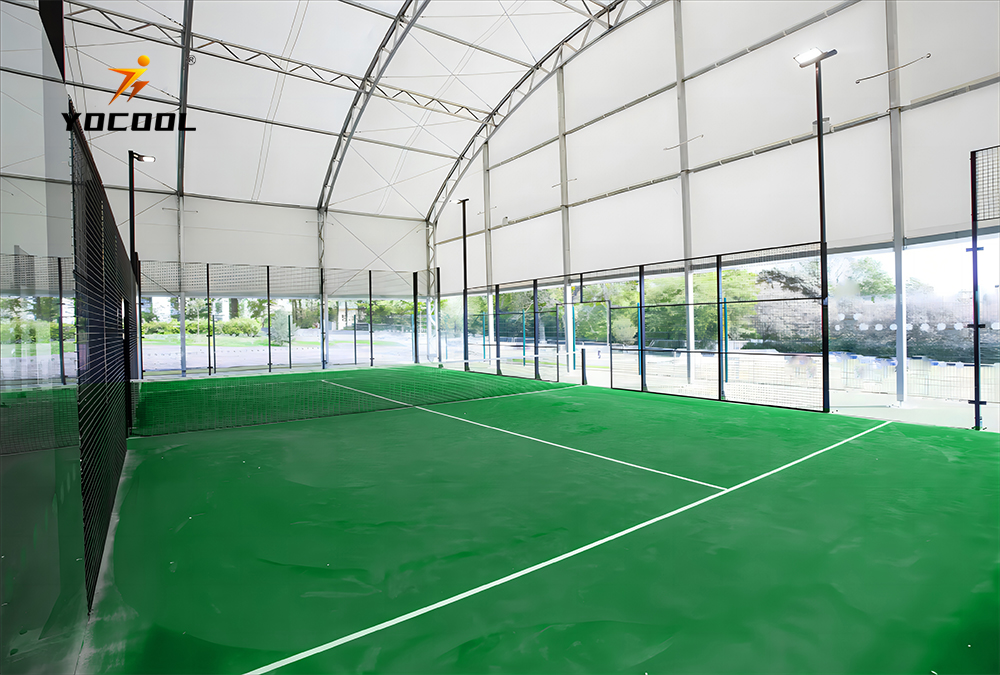

How to Build a Padel Court A Step-by-Step Guide
Padel is rapidly gaining popularity around the world, combining elements of tennis and squash to create an exciting and engaging game. If you’re considering building a padel court, whether for personal use or to open a business, you’re in for a rewarding project. Here’s a comprehensive guide on how to build a padel court.
Understand the Basics of Padel
Before starting the construction of your court, it’s essential to understand the dimensions and characteristics of a standard padel court. A typical padel court measures 20 meters in length and 10 meters in width. The playing area is enclosed by walls made of either glass or solid materials. The court is divided in half by a net, similar to a tennis court. Additionally, the playing surface is typically made of artificial turf, which provides good traction and comfort.
Choose the Right Location
Selecting the perfect location for your padel court is crucial. Look for a flat area with enough space not only for the court itself but also for surrounding facilities such as spectator areas, changing rooms, and parking. Ensure that the location has good drainage to prevent water accumulation and is accessible to players and guests.
Gather Necessary Permits
Before you begin construction, check local regulations regarding sports facilities. Depending on your area, you might need to obtain specific permits or adhere to zoning laws. It’s important to liaise with your local council or governing bodies to ensure that your project complies with all legal requirements.
Design and Planning
Once you have secured the location and permits, the next step is to design your court. You can hire an architect or a designer who specializes in sports facilities to help you create a detailed plan. Consider additional features such as lighting for night play, seating for spectators, and landscaping for aesthetic appeal. Ensure that your design incorporates safety considerations, such as adequate spacing between the court and surrounding structures.
Foundations and Surface
The foundation of your padel court is key to its longevity and performance. Start by marking the court dimensions on the ground. Excavate the area to create a leveled surface, then install a resilient base using compacted stone or gravel. This layer will provide drainage and prevent waterlogging.

Once the foundation is laid, it’s time to select the surface material. Artificial turf is the most common choice for padel courts, offering comfort and grip. Ensure that the turf is installed correctly, with seams tightly woven to avoid any hazards during play.
Construct Walls
The walls of a padel court can be made from transparent glass or solid material, depending on your preference and available budget. Glass walls allow spectators to see the game from all angles and create an open feel, while solid walls are more durable. Make sure the walls are built to the appropriate height—usually 4 meters at the back and 3 meters at the sides—to meet official standards.
Install the Net and Equipment
Once the basic structure is in place, it’s time to install the net, which divides the court into two halves. The net should be positioned at the center and be adjustable to accommodate different skill levels. Additionally, consider installing other accessories like benches, water stations, and scoreboards.
Lighting and Landscaping
If you plan to host evening games, adequate lighting is essential. Install floodlights around the court to provide sufficient brightness without causing glare. Afterward, focus on landscaping the area surrounding your court. This can include planting grass, trees, or shrubs to enhance the overall environment and improve its visual appeal.
Maintenance
Once your padel court is built, regular maintenance is required to keep it in excellent condition. This includes cleaning the surface, checking the integrity of the walls, and maintaining the net. Encourage players to help with upkeep, fostering a community spirit around your court.
Conclusion
Building a padel court is a significant yet fulfilling project that can enhance the sporting community in your area. By following these steps—from understanding the game’s requirements to ensuring proper maintenance—you can create a beautiful and functional padel court that will be enjoyed for years to come.
Premium Paddle Tennis Rackets for Every Court & Player
Premium Padel Courts: Expert Design & Installation Services
Premium Padel Courts: Panoramic Designs & Custom Builds
Premium Padel Court | Custom Designs & Quality Installation
Paddle Tennis Rackets: Unleash Power & Precision on Court
Best Paddle Tennis Rackets: Power, Control & Comfort